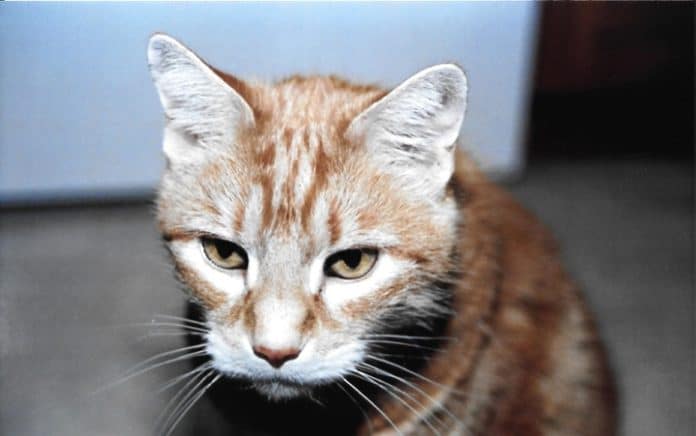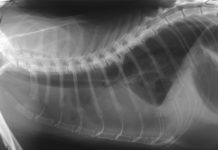Chyle is a slightly yellow or milky fluid, which is made up of fats and lymph from the intestines, as well as transferred into the circulation via the thoracic duct. The lymph is a watery fluid, which is produced by the body tissues that contains white blood cells that are important in protecting the cat. Chylothorax in cats is a feline condition, which results from the buildup of lymphatic fluid in the chest cavity wherein the lungs and the heart reside, with the major perpetrator being the chyle. Read on to this article to learn more about this feline condition.
Chylothorax in Cats: What is this feline condition?

Usually, the body of the cat maintains about 1 tsp. of clear fluid in this space. This helps in lubricating the lungs’ surface. In case of chylothorax, the fluid is cloudy and present in a much greater amount. Purebred cats are more likely to develop this disease than mixed breeds. It is important to have affected cats examined by a vet, because the condition can be fatal if left untreated.
When a cat begins having sustained difficulty breathing, one possible diagnosis is chylothorax. In this condition, chyle begins to build up between the lungs and the interior lining of the cat’s chest wall. The vet makes a diagnosis based on the appearance of the fluid as well as how much fluid is removed from the pleural cavity.
Chyle is a digestive fluid that is formed in the small intestine and conveyed by the thoracic duct to the veins. While traveling to the veins, chyle can leak into the chest cavity, accumulating there and causing excessive pressure on the chest and its organs. Lymph travels through the lymphatic vessels, transporting lymphocytes and fats from the small intestines to the blood stream. Commonly, when chyle has accumulated in the chest cavity, blockage or obstruction of the lymphatic vessels will occur, causing the vessels to dilate and affecting the tissue that covers the lungs and lines the inner chest cavity. This tissue becomes inflamed and scar tissue forms, narrowing the space and constricting the lungs. Severe breathing problems may result.
In cats, Asian breeds such as the Siamese and Himalayan seem to have a higher number of cases than other breeds. Any age can be affected, but aging cats are more likely to develop the condition, and the condition is suspected of being associated with cancer.
Causes of Chylothorax
When the veterinarian suspects Chylothorax in a cat that’s sick, they need to do some detective works in determining the cause of the condition. In some instances, the causes of Chylothorax in cats needs to be treated as the condition itself is being treated:
- Increase in the pressure within the vena cava
- Increase in the pressure inside the thoracic duct
- Trauma to the chest of the cat
An increase in the pressure within the thoracic duct or the vena cava may be due to:
- Kidney disease
- Heartworm infection
- Fungal infection
- Congestive heart failure
- Chest cancer or tumor
In case the veterinarian cannot identify the cause of the Chylothorax in cats, the conditions is referred to as idiopathic or of an unknown cause.
Symptoms of Chylothorax
In the early stage of Chylothorax in cats, the symptoms might not seem serious –it includes:

- Avoidance of exercise
- Possible depression
- Possible weight loss
- Lethargy
- Loss of appetite
- Fever
- Chest pain
- Cat appears to be holding its breath
- Labored breathing
- Cough
In the lethal stage of the condition, the cat might develop heart failure. This is possible just because the cat may learn to adapt its physical activity to its own abilities. This is what makes it easier for the cat owner to miss the condition.
Treatment for Chylothorax
Supplemental Treatment
The vet may prescribe rutin, which works to stimulate the development of cells called “macrophages” that remove fat in the chyle and slow the speed of fluid accumulation. The cat will be placed on a low-fat diet, which helps to lower triglyceride levels.
Surgical Treatments
If the fluid begins building up again, the cat will have a chest drain surgically implanted. This drain will be removed once the accumulation of chyle slows down and stops. This tube is drained frequently for at least one week after surgery.
Another surgical treatment is the ablation (burning or tearing) of the cistema chyli (CCA). This area holds lymphatic fluid in the abdomen. The ablation surgery obliterates this area and makes it possible for the cat’s body to form another pathway for the lymph fluid to enter the bloodstream.
Stabilization
Before any other treatment, the cat’s condition has to be stabilized. This is done by draining the accumulated fluid so the cat can breathe more normally. Fluid is drained using a syringe and needle. The cat will be given supplemental oxygen to make breathing easier. If the cat is extremely stressed, it may need to be sedated.









